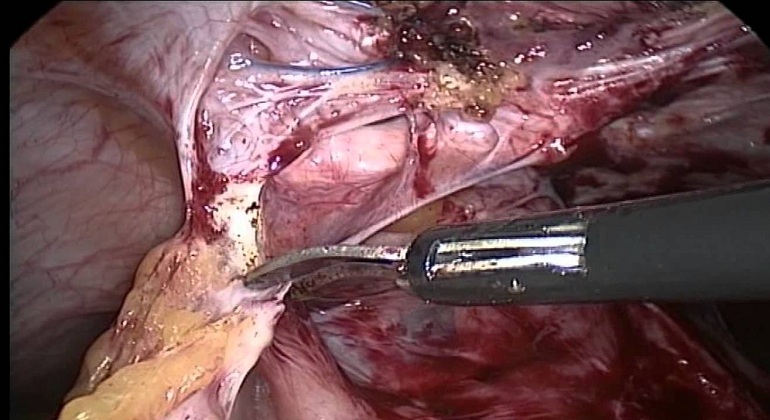
Peritoneal adhesion is a common cause of bowel obstruction, pelvic pain and infertility. Proper technique of adhesiolysis is important and operating surgeons should have clear concept of mechanism of adhesion formation.
Normal fibrinolytic activity prevents fibrinous attachments for 72 to 96 hours after surgery and mesothelial repair occurs within 5 days of trauma. Within these 5 days a single cell layer of new peritoneum covers the injured raw area, replacing fibrinous exudates. However, if fibrinous activity of the peritoneum is suppressed, fibroblast will migrate, proliferate and form fibrous adhesion. Collagen is deposited and neovasular formation starts.
The most important factors which suppress fibrinolytic activity and promote adhesion formation are:
Contraindications
Normal fibrinolytic activity prevents fibrinous attachments for 72 to 96 hours after surgery and mesothelial repair occurs within 5 days of trauma. Within these 5 days a single cell layer of new peritoneum covers the injured raw area, replacing fibrinous exudates. However, if fibrinous activity of the peritoneum is suppressed, fibroblast will migrate, proliferate and form fibrous adhesion. Collagen is deposited and neovasular formation starts.
The most important factors which suppress fibrinolytic activity and promote adhesion formation are:
- Port wound just above the target of dissection
- Tissue Ischemia
- Drying of serosal surfaces
- Excessive suturing Omental Patches
- Traction of peritoneum
- Blood clots, stones or dead tissue retained inside
- Prolonged operation
- Visceral injury
- Infection
- Delayed postoperative mobilization of patient
- Postoperative pain due to inadequate analgesia.
Contraindications
- Hemodynamic instability
- Uncorrected coagulopathy
- Severe cardiopulmonary disease
- Abdominal wall infection
- Multiple previous upper abdominal procedures
- Late pregnancy
